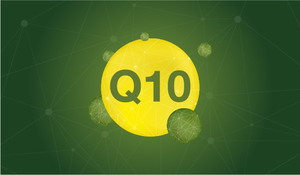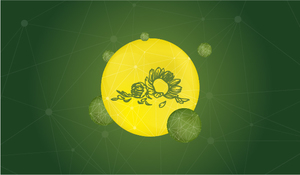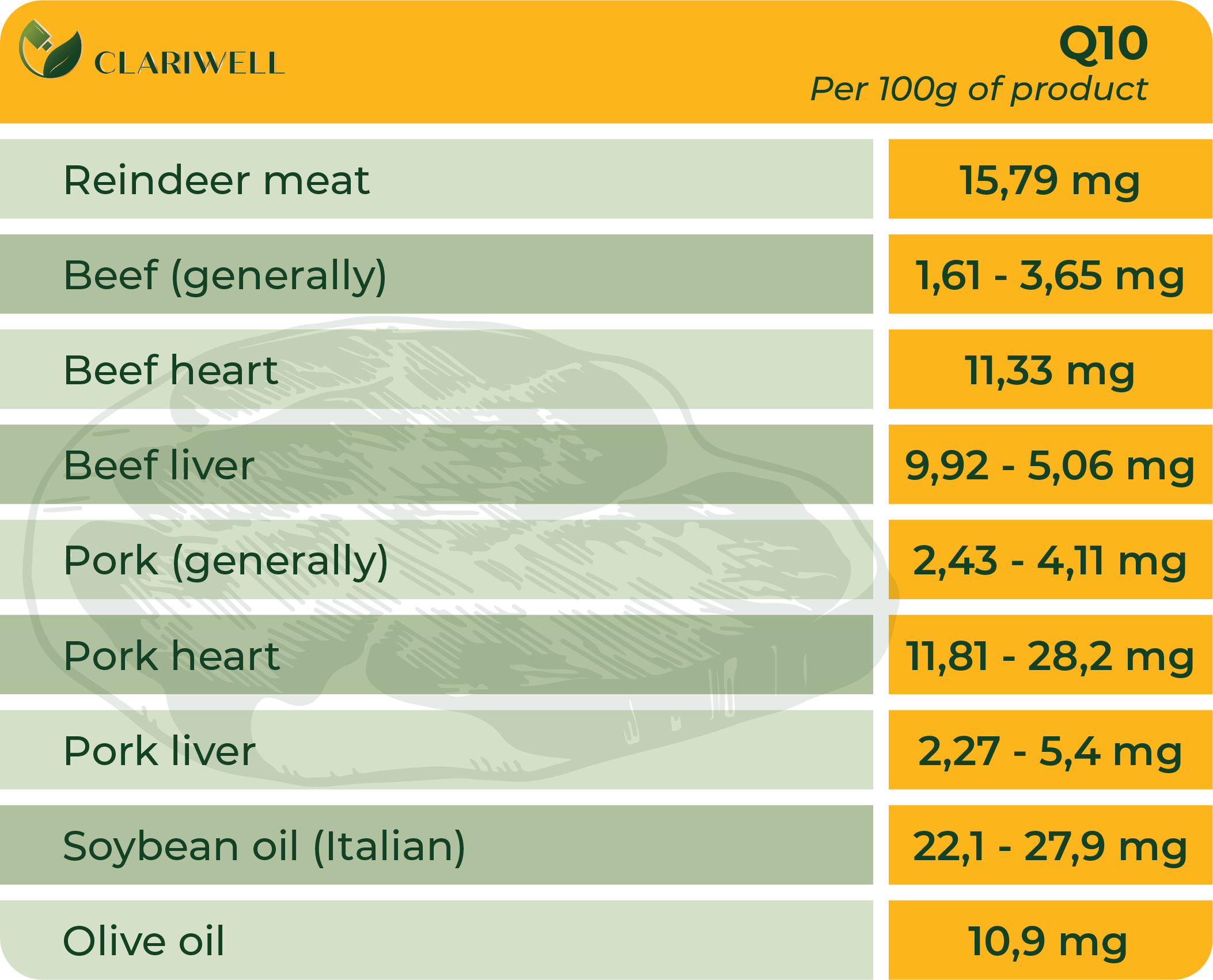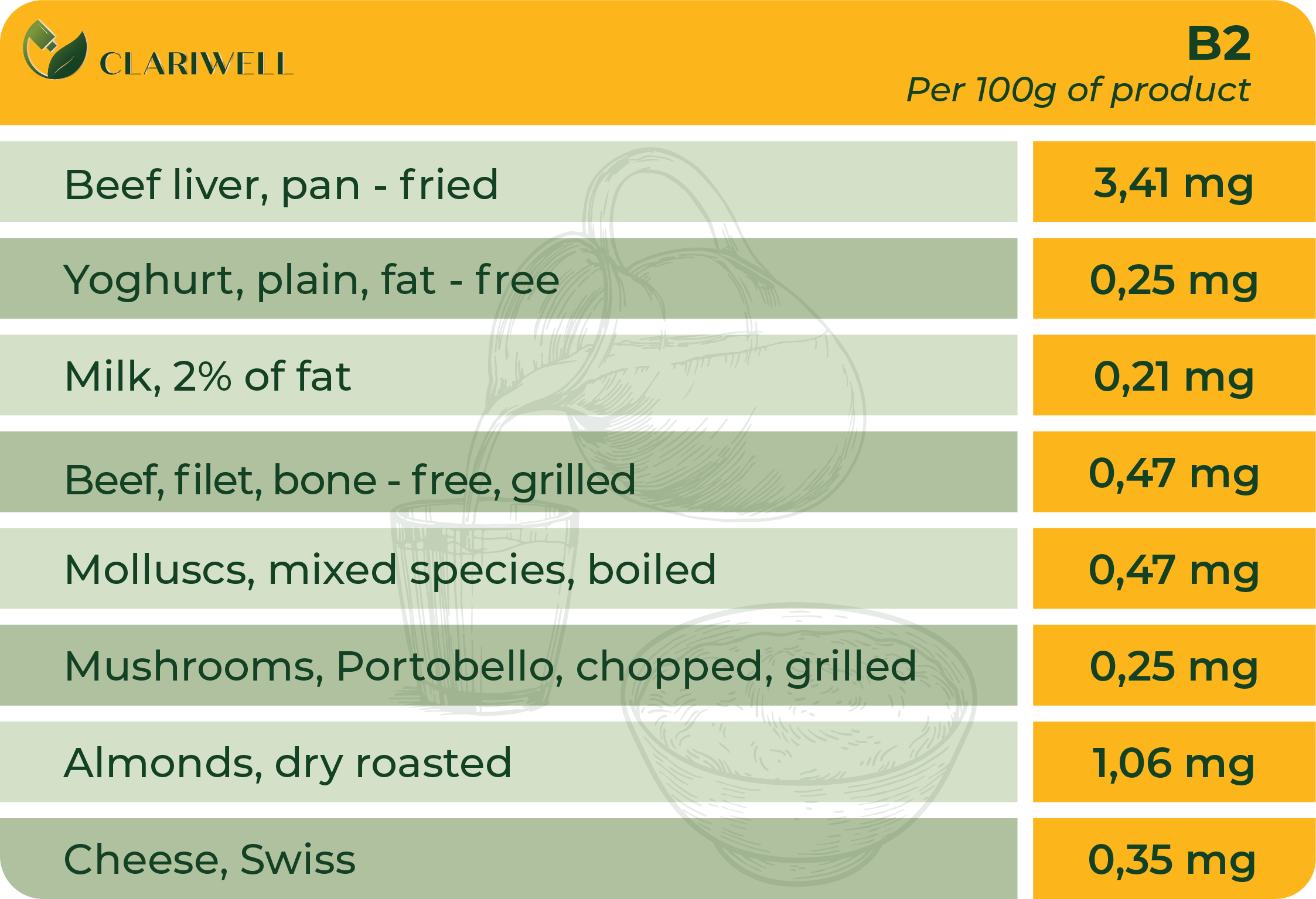
Magnesium
Magnesium is the fourth most frequently occurring mineral in a human body. It plays a vital role in normal functioning and division of cells, energy metabolism, normal functioning of nerves and muscles, maintaining cardiac rhythm and immunity support. Magnesium in sufficient doses is believed to have a favourable impact on migraine, chronic pain, anxiety and depression.
Magnesium is a natural mineral that was discovered in 1755. It is the eighth most abundant element on earth and occurs naturally only in combination with other elements. In nature, it is found in large mineral deposits such as magnesite and dolomite rocks.
Magnesium is required by entire body as it enables muscle contraction, conductivity of nerves. Magnesium keeps a steady heartbeat and strong immune system.
Magnesium is an essential nutrient that is involved in many key metabolic reactions such as energy production, glycolysis, and the synthesis of nucleic acids and proteins.
Magnesium also plays a role in the active transport of calcium and potassium ions across cell membranes, a process that is important to conductivity of nerves, muscle contraction, and normal heart rhythm.
From a neurological standpoint, magnesium plays an essential role in nerve transmission and neuromuscular conduction. It also has a protective role against excessive excitation that can lead to destruction of neurons (excitotoxicity) and has been implicated in multiple neurological disorders. Due to these important functions within the nervous system, Magnesium is a mineral of intense interest for the potential prevention and treatment of neurological disorders. Current scientific literature reviews the applicability of Magnesium for migraine, chronic pain, epilepsy, Alzheimer’s, Parkinson’s, and stroke, as well as the commonly comorbid conditions of anxiety and depression.
Magnesium is very important for our body but not all people have it in sufficient quantities. Why? The reasons can be quite different. U.S. National Institute of Health lists the following Groups at Risk of Magnesium Inadequacy:
People with gastrointestinal diseases
The chronic diarrhea and fat malabsorption resulting from Crohn’s disease, gluten-sensitive enteropathy (celiac disease), and regional enteritis can lead to magnesium depletion over time. Resection of the small intestine, especially the ileum, typically leads to malabsorption and magnesium loss.
People with type 2 diabetes
Magnesium deficits and increased urinary Magnesium excretion can occur in people with insulin resistance and/or type 2 diabetes. The Magnesium loss appears to be secondary to higher concentrations of glucose in the kidney that increase urine output.
People with alcohol dependence
Magnesium deficiency is common in people with chronic alcoholism. In these individuals, poor dietary intake and nutritional status; gastrointestinal problems, including vomiting, diarrhea, and steatorrhea (fatty stools) resulting from pancreatitis; renal dysfunction with excess excretion of Magnesium into the urine; phosphate depletion; vitamin D deficiency; acute alcoholic ketoacidosis; hyperaldosteronism secondary to liver disease can all contribute to decreased Magnesium status.
Several types of medications have a potential to interact with Magnesium supplements or affect Magnesium status. A few examples are provided below. People taking these and other medications of these groups on a regular basis should discuss Magnesium intakes with their healthcare providers.
Bisphosphonates
Magnesium-rich supplements or medications can decrease the absorption of oral bisphosphonates, such as alendronate (Fosamax®), used to treat osteoporosis. Magnesium-rich supplements or medications and oral bisphosphonates should be taken at least 2 hours from each other.
Antibiotics
Magnesium can form insoluble complexes with tetracyclines, such as demeclocycline (Declomycin®) and doxycycline (Vibramycin®), as well as quinolone antibiotics, such as ciprofloxacin (Cipro®) and levofloxacin (Levaquin®). These antibiotics should be taken at least 2 hours before or 4–6 hours after a Magnesium-containing supplement.
Diuretics
Chronic treatment with loop diuretics, such as furosemide (Lasix®) and bumetanide (Bumex®), and thiazide diuretics, such as hydrochlorothiazide (Aquazide H®) and ethacrynic acid (Edecrin®), can increase the loss of Magnesium in urine and lead to Magnesium depletion. In contrast, Potassium-sparing diuretics, such as amiloride (Midamor®) and spironolactone (Aldactone®), reduce Magnesium excretion.
Magnesium is possibly one of the most studied substances for people suffering from a migraine or headache. Some studies show that migraine sufferers tend to have lower magnesium levels than those who do not have this problem. Some scientists believe magnesium blocks signals in the brain that lead to migraine with aura or changes in vision and other senses. Studies also reveal that magnesium inhibits certain pain-inducing chemicals. Besides, it seems that lowering of magnesium levels also leads to narrowing of brain blood vessels potentially contributing to migraine.
Migraine’s neurological disorder is characterized by having pain in head and other various symptoms such as nausea, emesis, photophobia, phonophobia, and sometimes visual sensory disorders. Magnesium is a necessary ion for human body and has a crucial role in health and life maintenance. One of the main roles of Magnesium is to conserve neurons electric potential. Therefore, magnesium deficiency can cause neurological complications. Migraine is usually related to low amounts of Magnesium in serum and cerebrospinal fluid. Deficits in magnesium have significant role in the pathogenesis of migraine. Magnesium has been extensively used in migraine prophylaxis and treatment .
In scientific trials participants received daily magnesium supplementation for migraine prevention at varying doses (between 400mg and 1,200mg a day) for a varying period therefore it is difficult to define precisely the amount of magnesium a person needs to prevent migraine and it, most probably, is subject to individual factors (depending on the severity of magnesium deficit in that person).
However, some organisations, like Canadian Headache Association, recommend preventative magnesium therapy for adults and particularly a special dose of elementary magnesium of 600mg per day.
If you notice that magnesium-containing supplements do not alleviate your migraine attacks, it could be due to two underlying causes:
- Food supplement that you are using has poor bioavailability, meaning that it is not well absorbed. Usually, it is the case with poor quality food supplements which have low value of elemental magnesium (amount of magnesium indicated in a food supplement does not always equal the amount of elemental magnesium in the product) as well as different forms of magnesium has better or worse bioavailability.
- If diarrhoea appears after taking the daily dose, the food supplement is not absorbed good enough and does not give desirable effect.
Although there is no universally accepted definition, stress can be explained as a complex adaptive biochemical, physiological, psychological and gene expression change in the body (stress response) caused by a stimulus (stressor) and interpreted by the brain as dangerous.
The level of magnesium content in the body is closely related to the level of stress, since both stress and hypomagnesaemia (reduced magnesium in the blood) increase the negative effects of each other. In the case of hypomagnesaemia, as a result of stress, a series of disorders develop, for example, light-sensitive headaches, fibromyalgia (disorders described by widespread muscle and skeletal system pain accompanied by fatigue, sleep, memory disorders, etc.), chronic fatigue syndrome, audiogenic stress, cold stress and physical stress.
The transfer of magnesium from the intracellular (inside the cell) to the extracellular space primarily provides a protective role to mitigate the adverse effects of stress, but prolonged periods of stress lead to progressive magnesium deficiency and adverse health consequences.
A growing number of studies confirm that psychological stress promotes oxidative stress, mainly due to the autooxidation of catecholamines, and psychological stress increases lipid peroxidation, increases markers of DNA oxidative damage, and decreases plasma antioxidant activity. It is important here that magnesium antagonises (counteracts) many of these processes
- The word "magnesium" comes from the name of the Greek region Magnesia, where compounds of this element occur naturally.
- Milk of Magnesia, which works as a laxative and to treat indigestion, is a compound of magnesium, hydrogen and oxygen molecules.
- Don't put out a magnesium fire with water. After spraying the burning magnesium with water, it will start burning even faster, with a sharp flame.
- Magnesium ions have sour and bitter taste. A small amount of Magnesium gives taste to the mineral water.
- Magnesium is the 11th most abundant element in the human body by mass. Magnesium ions are found in every cell of the body.
- About 60% of the Magnesium in the human body is found in the skeleton, 39% in the muscle tissue, and 1% is extracellular.

Coenzyme Q10
Coenzyme Q10 is a fat-soluble substance produced by the liver. Some amount of Q10 is obtained from a diet. In terms of its properties CoQ10 resembles vitamins. Coenzyme Q10 is involved in production of energy and is also an important antioxidant. Many neurodegenerative disorders are related to low levels of this substance.
Coenzyme Q10 (CoQ10) is a naturally occurring component in living cells. It physiologically acts as a powerful antioxidant, membrane stabilizer and cofactor in the production of adenosine triphosphate (ATP) by oxidative phosphorylation, inhibiting the oxidation of proteins and DNA. ATP is a nucleotide with a very important role in the metabolism of living organisms. It is a universal source of energy for biochemical processes in organisms. Accordingly, CoQ10 is important for both metabolic and biochemical processes in the body.
CoQ10 was first approved in 1973 in Japan as a drug for the treatment of patients with heart failure, and it has been used as a drug in some other countries as well. However, in most countries such as the United States and the Europe, CoQ10 has been widely used as a food additive or dietary supplement for maintaining healthy body condition for more than 20 years .
CoQ10 or ubikuinone was known to play a key role in mitochondrial bioenergetics as a carrier of electrons and protons. Subsequent studies showed the presence of CoQ10 in other cell membranes and blood plasma, and its antioxidant role was extensively studied. In addition, recent data suggest that CoQ10 affects the expression of genes involved in the signaling, metabolism and transport of human cells. CoQ10 deficiency is associated with autosomal recessive mutations, mitochondrial diseases, aging-related oxidative stress and carcinogenesis processes, and secondary effects of statin (lipid-lowering drug class). Many neurodegenerative disorders are associated with low levels of CoQ10: diabetes, cancer, fibromyalgia, muscular and cardiovascular diseases.
While many people’s bodies make all the CoQ10 they need, some don’t. The body contains between 500 and 1,500 milligrams of CoQ10, and it decreases with age.
There are no known ideal dosages, as they vary from person to person. Standard dosages for CoQ10 supplements range between 60 and 500 milligrams daily, and the highest recommended daily allowance is around 1,200 milligrams. Possible causes of CoQ10 deficiency:
- Deficiencies of certain vitamins, such as vitamin B6
- Mitochondrial diseases
- Genetic defects affecting CoQ10 production
- Oxidative stress, or an imbalance of free radicals and antioxidants
Some CoQ10 containing foods include:
- Organ meats (heart, liver and kidney) contain the highest amounts of CoQ10 per 100 grams.
- Fatty fish, like trout, mackerel, and sardines contain CoQ10.
- Meat
- Soybean products such as tofu, soy milk, and soy yogurt are a valuable source of protein as well as CoQ10 for people who do not eat meat.
- In addition to many vitamins and minerals, a lot of vegetables and fruits contain CoQ10. Notably, broccoli, spinach, avocados and blackcurrants.
Adults who are not found or established to be deficient in CoQ10 are normally required 90- 200mg of CoQ10 per day.
CoQ10 has been used as a dietary supplement or a drug for more than 30 years. Published data of pre-clinical and clinical safety studies have shown that CoQ10 does not cause serious adverse effects in humans, and it is safe for use as a dietary supplement. Pharmacokinetic studies in animals and humans suggest that exogenous CoQ10 does not influence biosynthesis of CoQ nor does it accumulate into plasma or tissues after cessation of supplementation.
Coenzyme Q10 (CoQ10) is one of the most powerful antioxidants in the body, which also restores other antioxidants in the body and plays an important role in protecting against damage caused by reactive oxygen (reactive oxygen can destroy human cells). CoQ10 is the only known lipid-soluble antioxidant! During chronic migraine, inflammatory processes are formed that interfere with replenishment of antioxidant stores, thus reducing the possibility of getting rid of migraine discomfort.
CoQ10 is mainly found in the mitochondria of cells and it helps to improve cellular functions thus reducing the inflammation during a migraine. Since migraine and inflammation are interrelated, CoQ10 could mitigate or even prevent migraine-induced headache.
The pathophysiology of the migraine is not fully understood yet, however blood vessel and neuron dysfunction may be explained with oxygen exchange problems which stem from mitochondrial dysfunction. When it comes to problems with mitochondria, at least some part of patients and, taking into account the important role CoQ10 has to play in accumulating mitochondrial energy, CoQ10 could become a good substance for migraine prevention.
- Fat-soluble, vitamin-like substance that occurs primarily in the mitochondria of practically every cell in the body.
- It is responsible for generating 95 percent of the human body’s energy.
- Both natural and synthetic form of CoQ10 is available; ubiquinone is produced through a proprietary bacteria-production process; ubiquinol is manufactured via yeast fermentation.
- The heart is a remarkable organ as it beats 100,000 times every 24 hours and 2.5 billion times by the age 70, without a single holiday. Consequently, it requires a huge amount of energy. For this reason, nature has placed more CoQ10 in the heart than any other organ.
- There is a belief, that 50% of overweight patients have low levels of CoQ10. Speeding up metabolism with CoQ10 is a safe way to help in weight loss.
- Several studies have concluded that supplementing with CoQ10 may improve sperm quality, activity and concentration by increasing antioxidant protection

Feverfew (Tanacetum parthenium L.)
Feverfew is a perennial herb similar to the chamomile, with strong aroma. It is not toxic and is usually grown as decorative plant. Feverfew has anti-inflammatory and pain alleviating properties. Research has shown that feverfew is especially efficient in case of migraine and headache.
Feverfew (Tanacetum parthenium L.) belonging to the family Asteraceae (daisies) is a daisy-like perennial plant found commonly in gardens and along roadsides. The name stems from the Latin word febrifugia, “fever reducer.” The first-century Greek physician Dioscorides prescribed feverfew for “all hot inflammations.” Also known as “featherfew,” because of its feathery leaves. It is a short, bushy, aromatic perennial that grows 0.3–1 m in height. Its yellow-green leaves are usually less than 8 cm in length, almost hairless, and pinnate–bipinnate (chrysanthemum-like). Its yellow flowers, which bloom from July to October, are about 2 cm in diameter. They resemble those of chamomile (Matricaria chamomilla), for which they are sometimes confused, and have a single layer of white outer-ray florets. This aromatic plant gives off a strong and bitter odor. Its yellow-green leaves are alternate (in other words the leaves grow on both sides of the stem at alternating levels), and turn downward with short hairs. The small, daisy-like yellow flowers are arranged in a dense flat-topped cluster.
Feverfew (Tanacetum parthenium L.) is a medicinal plant traditionally used for the treatment of fevers, migraine headaches, rheumatoid arthritis, stomach aches, toothaches, insect bites, infertility, and problems with menstruation and labor during childbirth. The feverfew herb has a long history of use in traditional and folk medicine, especially among Greek and early European herbalists. Feverfew has also been used for psoriasis, allergies, asthma, tinnitus, dizziness, nausea, and vomiting. The plant contains a large number of natural substances, but the active principles probably include one or more of the sesquiterpene lactones known to be present, including parthenolide. Other potentially active constituents include flavonoid glycosides and pinenes. It has multiple pharmacologic properties, such as anticancer, anti-inflammatory, cardiotonic, antispasmodic, an emmenagogue, and as an enema for worms. The plant is widely cultivated to large regions of the world and its importance as a medicinal plant is growing substantially with increasing and stronger reports in support of its multifarious therapeutic uses.
No serious side effects have been reported from feverfew use. Side effects can include nausea, digestive problems, and bloating; if the fresh leaves are chewed, sores and irritation of the mouth may occur.
People who are sensitive to ragweed and related plants may experience allergic reactions to feverfew.
Do not take feverfew while pregnant because it may affect uterine contractions. Little is known about whether it’s safe to use feverfew while breastfeeding.
Using feverfew topically may cause skin irritation.
Feverfew (Tanacetum parthenium L.) is a well-known plant used in migraine prevention.
Feverfew is a medicinal herb possessing a range of healing properties and ability to alleviate headache that was recognised even in the Middle Ages. The healing properties of the feverfew in migraine pathophysiology is not entirely understood yet. Feverfew extract promotes secretion of serotonin (5-hydroxitriptamine) from platelets facilitated by several aggregation mediators. Physiologically, serotonin is involved in transmission of nerve impulses between neurons. It is also called a neurotransmitter. Serotonin is mainly found in the brain, gastrointestinal tract and platelets. Activity of serotonin in human body is specifically related to smooth muscle activity and impulse transmission between neurons, furthermore, serotonin triggers a sense of happiness and well-being.
Feverfew extracts and pure parthenolide inhibits synthesis of prostaglandins. Since prostaglandins are substances that trigger inflammation and pain, promote exudate (fluid that leaks from blood vessels during inflammation) and fever, the feverfew has beneficial impact on these aspects by preventing or mitigating them. Meanwhile parthenolide has a considerable impact on vasoconstriction and vasodilation mechanisms.
Several clinical studies have confirmed that benefits of feverfew in migraine prevention greatly exceed the risks. No evidence on serious side effects has been gathered from clinical studies and long-term users of this product regarding safety and tolerance of the feverfew.
Feverfew extracts inhibit 5-HT secretion in platelets by neutralising sulfhydryl groups both in cell and outside it. Sesquiterpenes found in the feverfew contain alpha-methylethylene butyric acetone units that can react with sulfhydryl groups
Feverfew seems to have more than one pathway mechanism of action. Plant extracts affect a number of physiological pathways. Some of these mechanisms were discussed above, for example, inhibition of prostaglandin synthesis, reducing of vessel's smooth muscle spasms and blocking of platelet granule secretion.
The feverfew is known worldwide, for example, Canadian Health Protection Department has granted the Drug Identification Number (DIN) to feverfew product allowing its producer to put a claim that this over-the-counter medication eliminates migraine headache.
Feverfew is well researched also in Europe and the European Medicines Agency in its evaluation report on feverfew (EMA/HMPC/48716/2019) has concluded that feverfew is being used for treating migraine and headache with a therapeutic dose of 100 mg of herbs per day.
- The ancient Greeks called the herb “Parthenium,” supposedly because it was used medicinally to save the life of someone who had fallen from the Parthenon during its construction in the 5th century BC.
- Feverfew also was known as “medieval aspirin” or the “aspirin” of the 18th century
- In Central and South America, the plant has been used to treat a variety of disorders. The Kallaway Indians of the Andes mountains value its use for treating colic, kidney pain, morning sickness, and stomach ache. Costa Ricans use a decoction of the herb to aid digestion, as a cardiotonic, an emmenagogue, and as an enema for worms. In Mexico, it is used as an antispasmodic and as a tonic to regulate menstruation. In Venezuela, it is used for treating earaches
- Feverfew also has been planted around houses to purify the air because of its strong, lasting odor, and a tincture of its blossoms is used as an insect repellant and balm for bites. It has been used as an antidote for overindulgence in opium.

Vitamin B2 or Riboflavin
Riboflavin is a water-soluble vitamin, a part of ferment systems which are involved in cellular respiration, carbohydrate and protein breakdown. It is required for optimum functioning of the gastrointestinal tract, blood cells and brain. The main lines of research into riboflavin are related to its impact on tumours and migraine headaches.
Riboflavin was discovered by Blyth in 1872 as a yellow fluorescent pigment in milk, but the vitamin property of this pigment was not established until the early 1930s. Plants and some micro-organisms can synthesize riboflavin; however, it is an essential nutrient for human health and should be obtained from the diet.
Riboflavin, vitamin B2, is a thermally stable, water-soluble vitamin used by the body to metabolize carbohydrates, fats, and protein into glucose for energy. In addition to boosting energy levels, this vitamin functions as an antioxidant for the proper functioning of the immune system, healthy skin, and hair. These effects occur with the help of two coenzymes, flavin mononucleotide (FMN) and flavin adenine dinucleotide (FAD). In riboflavin deficiency, macronutrients like fats, carbohydrates, and proteins cannot be digested to properly maintain the body. Riboflavin is required for normal development, lactation, physical performance, and reproduction.
A healthy digestive system can absorb most of the nutrients from the diet, so it is important to get most of the riboflavin from dietary sources. As already mentioned, Riboflavin has a yellow-green, fluorescent pigment, which causes urine to turn yellow, indicating that the body is absorbing riboflavin. Riboflavin also helps convert tryptophan to niacin, which activates vitamin B6.
Riboflavin deficiency can be caused by insufficient intake of nutrients or pathologies of the endocrine system. Riboflavin deficiency interacts also with deficiency of other B group vitamins. It is naturally occurring in food products such as eggs, dairy products, meat, green vegetables and grains. Antioxidant riboflavin has the same pathway as glutathione. Glutathione is a natural antioxidant created in our bodies, a simple peptide consisting of three amino acids – glycine, cysteine and glutamine. It possesses several vital properties that regulate bodily processes – immunity boosting, energy production, slowing down of cell ageing, lowering cholesterol level. All cells of the body synthesize glutathione but on a daily basis it can be inhibited and reduced by a number of factors, such as poor nutrition, use of drugs, stress, infections. Glutathione aims at neutralising free radicals and liver detoxification because free radicals can contribute to development of several diseases. A reason of deficient riboflavin can be also chronic diarrhoea, liver problems, alcoholism and haemodialysis.
Groups at risk of riboflavin deficiency are:
Athletes. Exercise load strains metabolism therefore riboflavin is consumed excessively.
Pregnant and breastfeeding woman (sometimes also infants). Pregnant or lactating women who rarely consume meats or dairy products are at riboflavin deficiency risk, which can have adverse effects on the health of both mothers and their infants. Riboflavin deficiency during pregnancy, for example, can elevate the risk of preeclampsia.
Vegetarians or vegans and/or persons who consume very little of milk. Those who eat meat and dairy products obtain a substantial proportion of riboflavin from their diets. For this reason, people who live in developing countries and have limited intake of meat and dairy products are exposed to increased riboflavin deficiency risk. Vegans and those who consume little milk in developed countries are also at riboflavin inadequacy risk.
Adults who are not found or established to be deficient in Vitamin B2 are normally required 1.3 mg for men, 1.1 mg for women and 1.4 mg for pregnant women of Vitamin B2 per day.
When supplementing with riboflavin, appropriate amount is five to ten times the daily recommended allowance (1.3 mg for men, 1.1 mg for women and 1.4 mg during pregnancy). No toxic or adverse effects from intake of high riboflavin doses by humans have been reported so far. However, it can be suggested that a high dose of riboflavin could cause an imbalance in the antioxidant state of human body. However, there is no strong evidence in this area, calling for further investigations to clarify the possible adverse effects of high riboflavin intake.
Allergic reaction to this vitamin is rare. However, seek medical help right away if you notice any symptoms of a serious allergic reaction, including rash, itching/swelling (especially of the face/tongue/throat), severe dizziness, troubled breathing. However, this is not a complete list of possible side effects.
Migraine headache usually presents as intense pulsating or stabbing pain in one area of head. Sometimes it is accompanied by aura (transient focal neurological symptoms before or during headache). In case of some types of migraine there is an established causality of mitochondrial dysfunction. Since riboflavin is required for mitochondria to function, researchers are looking at riboflavin as a possible remedy for preventing or treating migraine headache.
Several studies have been carried out involving riboflavin as migraine prevention or treatment agent. Some of these studies chose large doses of riboflavin – 400mg and more per day, yet several research have shown that large daily doses of riboflavin are not necessary. Improvements can be seen from as large daily dose as 25mg when administered for 3 months.
Research in general shows that administering of B2 vitamin for adults may have positive effect on reducing frequency and duration of migraine episodes without serious side effects. Conclusion: riboflavin seems to be safe and well tolerated solution for migraine symptom prevention in adults.
- Riboflavin is easily destroyed when exposed to light. Milk stored in a glass container and exposed to light loses much of its riboflavin content. Opaque plastic jugs and paper cartons protect the riboflavin in milk. Only small amounts of riboflavin are lost in cooking.
- Out of all of group B vitamins, Riboflavin is probably the most outspoken. It means that you can physically tell if your body has consumed enough Riboflavin as you will notice extra yellow colour of urine if consumption is intense. It is actually the only vitamin that gives you an actual indication of its functioning inside your body! However, due to Riboflavin being water-soluble, your body flushes it out every day, therefore it must be replenished daily.
- To make Vitamin B2 for food supplements or to add it to foods, industrial companies grow special yeasts, fungi, or bacteria that synthesize a lot of Riboflavin.
- Riboflavin is yellow or orange-yellow, so it can be useful as a food coloring. Under a blacklight Riboflavin has ultra-green glow.
- Weight loss increases your need for riboflavin by 60%. More than 20 minutes of cardio exercise 6 days per week increases your need by nearly 60%, too.
 Free delivery to Omniva parcels throughout the Baltics for purchases from 20 euros!
Free delivery to Omniva parcels throughout the Baltics for purchases from 20 euros!



